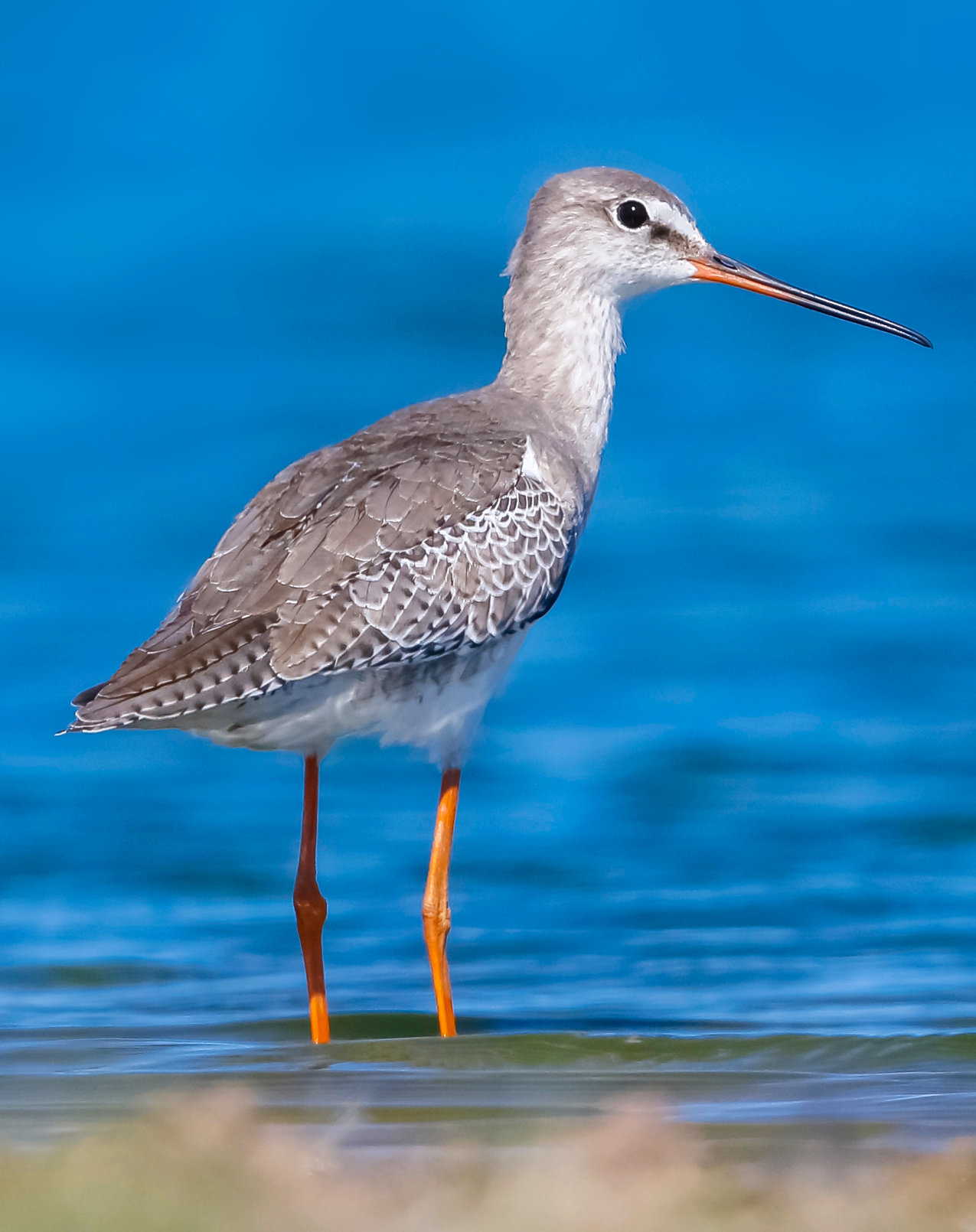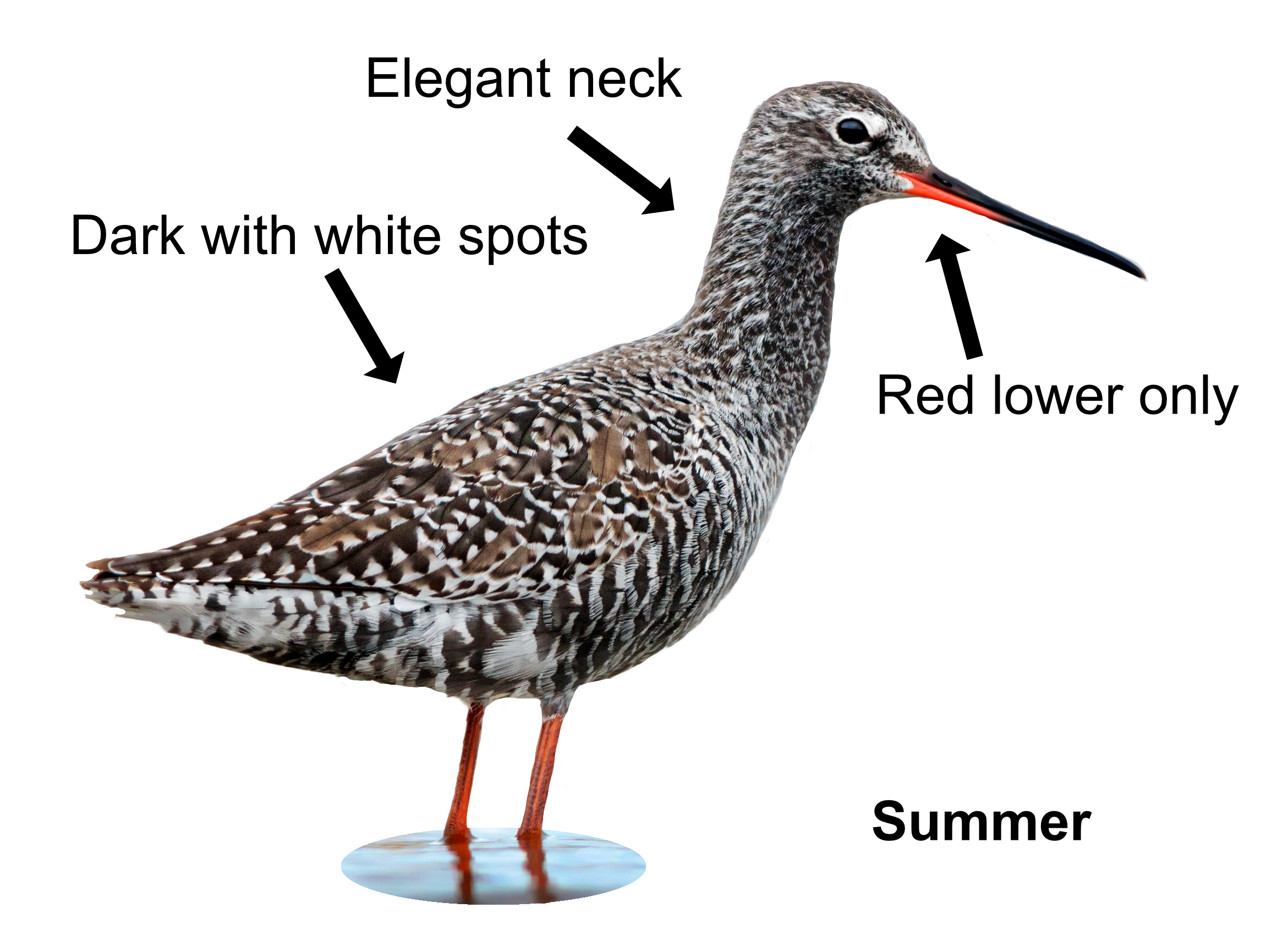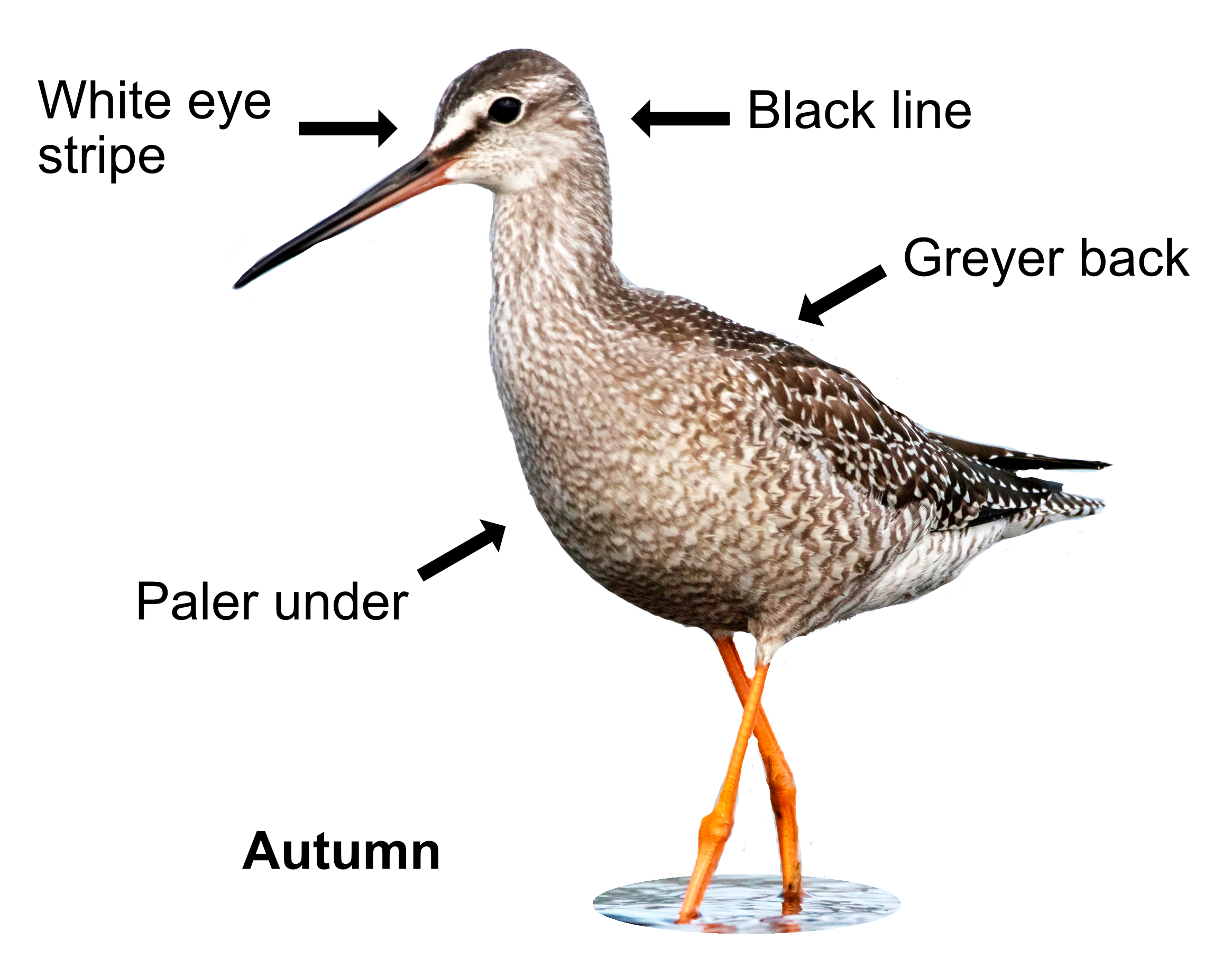
The Spotted Redshank is the more elegant, slightly larger, handsome cousin of the Redshank. Its shape is like a Redshank that has been stretched a bit. They are a passage migrant, best seen in the autumn and spring, with fewer than 100 overwintering in Britain. They can be found on reservoirs, inland lakes, coastal marshes, lagoons and creeks.

The Spotted Redshank’s dramatic summer plumage is almost entirely dark with white spotting on the wings and a white wedge on its back that shows clearly in flight together with a barred tail. It lacks the Redshank’s white wing bar. In winter, they have a grey back, paler underparts, long red legs and a prominent eye stripe with a black line through the eye. The long bill, unlike a Redshank’s, only has red on the lower part. The female is slightly larger than the male and has a slightly more muted plumage while the youngsters are spotted grey-brown. The Spotted Redshank’s call is a loud “chew-it”.
Spotted Redshanks eat small marine creatures, insects and fish by probing. They often wade into deep water and can submerge their entire head and even upend like a duck when looking for food.

They breed on arctic bogs and swamps surrounded by woods. The nest is a shallow scrape lined with leaves. In May, mum lays 4 speckled dark green eggs and leaves dad to do most of the 23 day incubation, hanging around for less than a month and leaving before the eggs have even hatched! Like many ladies, she doesn’t like the cold and goes off to form flocks and enjoy shrimp cocktails with the other girls. Dad shows up a month later with the kids once they have fledged. They moult completely between July and September into their winter plumage and moult again between March and May into their summer finery.
The Spotted Redshank, like many waders, is threatened by habitat loss at its wintering grounds and on its migration routes due to coastal erosion or the drainage of wetlands. It is also vulnerable to pollution. Management of their stop-over sites is becoming increasingly important. As they are a relatively scarce wintering bird in the UK, with more than half the population found at fewer than ten sites, they are Amber Listed.
Their Latin name is ’tringa erythropus’ where ’tringa’ is from the Ancient Greek ’trungas’, a thrush-sized, white-rumped, tail-bobbing wading bird mentioned by Aristotle, and ’erythropus’ is from Ancient Greek ’eruthros’ for ‘red’ and ’pous’ for ‘foot’. Their English name comes from their spotted black summer plumage. They are also locally known as the ‘dusky redshank’.